Designing Content Schemas
The source of all Presentation is Data; yet most of the industry tooling is
geared towards Screen Design rather than Content (aka Data) Design. This
seems a bit misplaced, because in every other field of communication,
Content is hailed as King, yet the treatment in terms of tooling is not at
par with that sentiment!
The Vyuh Framework embraces the idea of Content driven Experience, where you design the structure of the Content, with a thin layer of hints to allow building the Presentation layer. Hence the design of features with the Vyuh Framework generally starts from building the design of Structured Content.
Structured Content
For a deeper understanding of Structured Content and why it plays such a critical role in general App Design & Development, do read the article at Sanity.io 🔗.
Growing set of Principles
Section titled “Growing set of Principles”After having built a variety of features (aka Mini-Apps) across a wide range of verticals such as Fashion, Finance, Retail, Healthcare, Real Estate, Flights, Hotels, Delivery and many others, we have observed a few principles that help in effective development of Mini-Apps. These are listed below, in no particular order.
- Naming is crucial. DO take your time to pick the right name that conveys the most meaning and intent. This applies to fields, objects, documents, classes, methods, packages and even Apps.
- DO use the jargon from the Business Domain
- DO NOT introduce presentation attributes into a Content Schema. For
example, a
Card with Imageis a better way to imply the final rendering without mentioning details of the border-radius, shadows, colors, fonts, etc. Strive to keep the content pristine without muddying it with presentation related attributes. - DO emphasize on correct spellings of field names. Eg: Use subtitle and not subTitle or SubTitle. Subtitle is a single word without a change in casing for the letter T of title.
- DO find existing content items and rely on them before defining newer
content-items. A classic example is of creating a
Buttoncontent block instead of using theCardwith a custom Button Layout. - When the content-item is a fundamental part of the jargon, DO have a
separate content-item instead of reusing existing ones. For example, if you
are showing Movie details on a card, it is better to create a custom
Movie Carditem instead of reusing the defaultCard. Stay true to the semantics and business jargon used in the domain of the Mini-App. This is a corollary to the principle in 2. - DO use the CMS purely for configuration and hide implementation details from it. The typical person of a CMS studio is a Content Author who wants to focus on the Content rather than its presentation. There are times when the presentation differences matter, eg: Mobile vs Desktop. In those cases, create a Conditional Layout for that item with the configuration differences.
- DO NOT generalize schemas unless you have seen two to three instances of similarity. Refactoring into a common schema too soon has its perils and results in too much of if-else conditions in code later on. It is better to wait for patterns of similarity to emerge before the big refactor.
Presentation Principles with Flutter
Section titled “Presentation Principles with Flutter”The principles listed below are applicable for all Flutter apps. However, in the context of Vyuh, they make even more sense as it gives greater flexibility with the configuration coming from a CMS.
- DO start with a Design System when building your Mini-Apps. A DS will help you be more consistent with your UI across all the screens.
- DO divide the content-type that has lots of fields into a set of related sections. Then allow rendering the content by sections. This gives configurability on the CMS to reorder sections, add/remove sections and even style them differently using different layouts.
- DO reuse the default content types like Card, Group, PortableText, Accordion with possibly different layouts to get going faster.
- DO use the layout configuration as an opportunity to provide a different design variant for the content type. A Content Type can have one of many layouts and can be changed for different screens.
- DO keep your widget trees shallow. Break up large widgets into smaller more semantic widgets for easier maintainability.
- DO keep the naming of the Widgets in sync with the business domain.
Keeps Evolving
The above principles are what we have applied so far. This will keep evolving as we tackle more varieties of use cases in the future.

